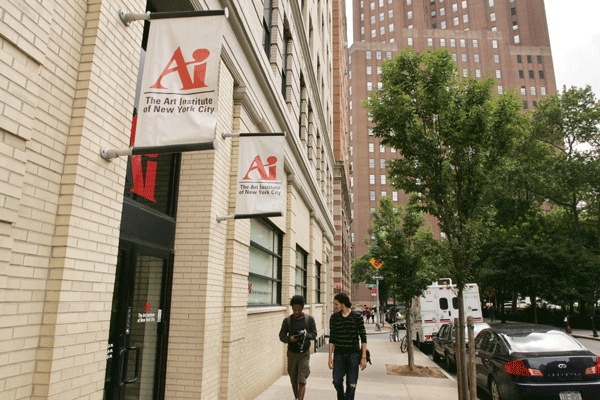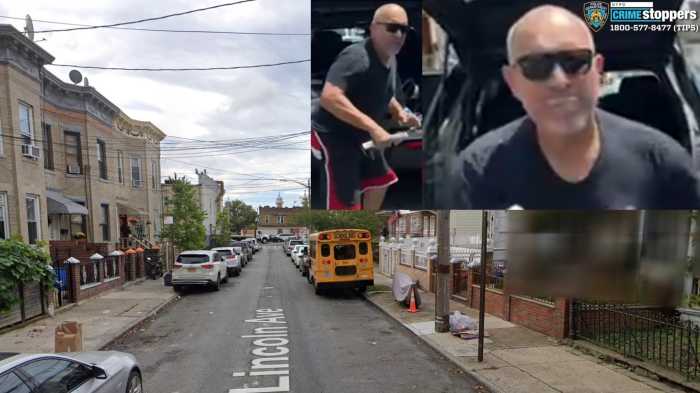
BY CURTIS SKINNER / NEW YORK WORLD & SAM SPOKONY | Some students at Tribeca’s Art Institute of New York will be facing more than the fast-paced pressure of creative industries once they graduate. Just one in five of the former students in the school’s fashion program, whose payments on government-sponsored student loans first came due during the 2006 and 2007 school years, subsequently paid down their loans during fall 2010 or the first nine months of 2011, newly released government data shows.
Art Institute fashion students left school with debt obligations equivalent to more than twice their annual discretionary income, as measured by the average earnings of the program’s graduates over two years.
Students in the Art Institute’s graphic design program paid back loans at a stronger pace, with 35 percent making a dent in their debt during the surveyed period, but lagging far behind 69 percent at competing School of Visual Arts.
“There’s a lot of anxiety,” said Joe Politz, a 23-year-old graphic design major at the Art Institute who is supposed to graduate this December. “I have six months to start paying my loans back [after graduation], and then I’ll have a sum to pay each month until they’re done.”
Politz stated that, although he receives some government financial aid, he expects to graduate with over $50,000 worth of debt. And with four months left until graduation, he still hasn’t secured a full-time job.
“I’m wondering how it’s going to get paid if I don’t manage to get a decent job,” he said.
Total tuition for the Art Institute’s two-year associate degree fashion and filmmaking programs cost nearly $59,000. The school is located at 11 Beach St., between Varick Street and Ericsson Place.
The Art Institute was one of 34 out of a total of 88 New York City professional schools rated by the U.S. Department of Education to have fallen short on at least two of three measures gauging excessive student-loan burdens, according to the data. Career-training programs with track records of leaving students struggling to pay back government loans are supposed to fall under special scrutiny by the agency.
Under rules scheduled to take effect in 2015, trade schools that fail to meet all three standards would have to disclose the risks to prospective students. If the numbers don’t improve, the schools will subsequently be barred from accepting federal student loan dollars.
A June 30 ruling by Judge Rudolph Contreras from the U.S. District Court has now thrown the new rules into doubt. In deciding a lawsuit filed against the U.S. Department of Education by a trade association for for-profit career schools, the judge vacated the federal regulations as “arbitrary and capricious.” Specifically, Judge Contreras singled out the Department’s expectation that at least 35 percent of a program’s students will begin to repay their loans within a couple of years as “not based upon any facts at all.”
According to the federal Department of Education, the fight is far from over.
While the rules remain in limbo, the new federal statistics paint a sober picture of the debt burdens students carry as they enter a tough job market. Overall, New York City’s career-training programs had better average loan repayment rates, at 42 percent, than the national average of 38.
The Art Institute e-mailed a statement pointing to the federal court decision that struck down the Obama administration’s regulations gauging trade school students’ debt burdens. “The United States District Court…vacated the repayment rate measure, the debt-to-income measures and other related portions of the gainful employment rule.” It also noted that the federal Department of Education already requires schools to disclose how many students get placed into jobs. The Art Institute’s Web site claims an average employment rate for its graduates of 85 percent.
But 24-year-old Brian Diapol, an interior design major planning to graduate from the Art Institute this December, expects to be unable to gain employment in his field upon leaving school.
“Someone with a two-year degree in interior design just can’t get jobs as easily as someone with a bachelor’s degree,” he said. “And as a young person going into the field, I don’t have the qualifications that a lot of other people have.”
Diapol added that, although he plans to seek a bachelor’s degree in architecture in the future, he has resolved to take a temporary job teaching sports to children. All of the income from that job will go toward his student loans, which total about $59,000 — the full cost of his degree.
Twenty-year-old Shakiyla Thompson, a fashion marketing and merchandising major who plans to graduate in 2014, said she felt somewhat misled by the Art Institute’s optimism about her future job prospects.
“I knew nothing about the risks before I started,” she said. “[The school] made it seem like everything was perfect, and that everything would work out. But now, I wonder if getting the associate degree will even have been worth it, once I have to look for a job.”
While Thompson estimates that her debt from loans will only amount to about $10,000, she is extremely worried about her ability to pay them off, since the rest of her tuition has been paid out-of-pocket.
“I was actually considering going back to school after this to get a bachelor’s degree, but I don’t think I’d even be able to afford it,” she said.
The New York World is an investigative news outlet published by Columbia University’s Graduate School of Journalism.




































